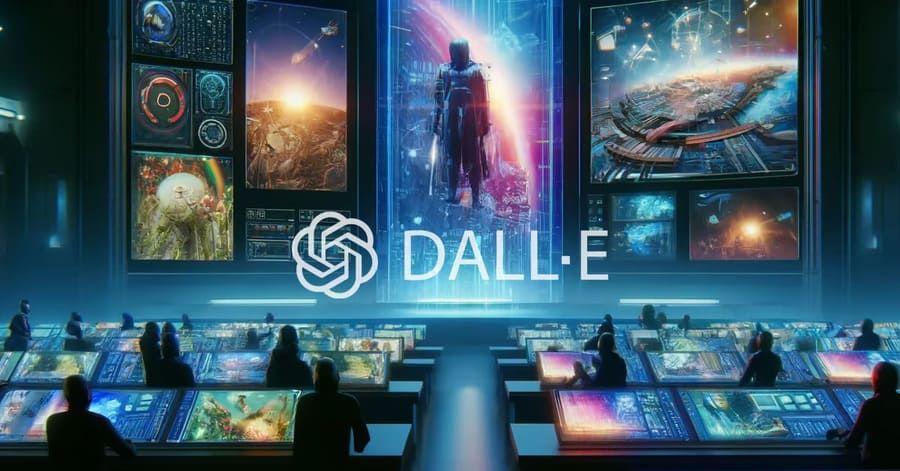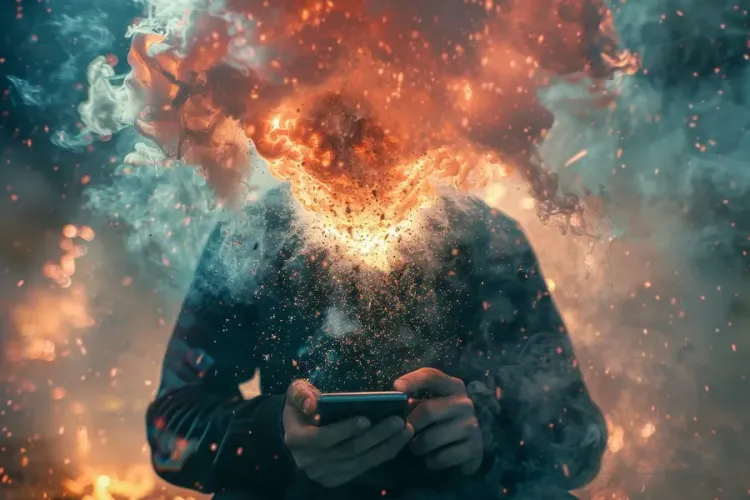In today’s world, artificial intelligence has truly revolutionized the field of arts and design. Gone are the days where people’s creative ideas are held back by their lack of art and design skills. Nowadays, all it takes is a simple click to turn artistic imagination into illustrated reality. This isn’t done through magic or sorcery, but through the technological wonders of AI image generation applications—and standing at the forefront of this innovation is DALL-E, the image generation masterpiece of OpenAI.

What is DALL-E?
 From the innovative minds of OpenAI, DALL-E is an image generation AI that allows users to generate images byentering their own text-based prompts. The name DALL-E symbolizes the unification of art and technology, where “DALL” pays homage to the Spanish artist Salvador Dali and “-E” references the popular Disney character Wall-E. As of today, DALL-E has 3 versions: DALL-E, DALL-E 2, and DALL-E 3. But before we delve deeper into the intricacies of DALL-E in our lives, let’s take a look at how it came to be the DALL-E known today.
From the innovative minds of OpenAI, DALL-E is an image generation AI that allows users to generate images byentering their own text-based prompts. The name DALL-E symbolizes the unification of art and technology, where “DALL” pays homage to the Spanish artist Salvador Dali and “-E” references the popular Disney character Wall-E. As of today, DALL-E has 3 versions: DALL-E, DALL-E 2, and DALL-E 3. But before we delve deeper into the intricacies of DALL-E in our lives, let’s take a look at how it came to be the DALL-E known today.
History of DALL-E
DALL-E was first released in January 2021 by OpenAI. To learn how to create images based on prompts, the method that was initially used by DALL-E was called Zero-Shot Text-to-Image Generation. Zero-Shot is an AI learning method that allows a model to recognize and categorize data that it has not yet seen before through leveraging pre-existing data to create a response. In order to evaluate if DALL-E generates image outputs correctly, OpenAI also developed the Contrastive Language-Image model, or CLIP, which analyzes the caption that is most suitable for a generated image. To actually create the images, this version of DALL-E used a discrete variational autoencoder (dVAE) which allows it to deconstruct an image in order to make it easier to reconstruct.
The second version, DALL-E 2, was released by OpenAI in April 2022. A significant change in this version was the model that it used in order to generate the images. From the dVAE, they moved towards a diffusion model which allowed them to generate higher-quality images through the integration of the CLIP data. Aside from higher resolution, DALL-E 2 also introduced faster speed, more image sizes, art style customization, and image background extension.
The latest and most powerful version, DALL-E 3, was released in October 2023. Aside from offering the highest-quality images amongst the three versions, DALL-E 3 champions better text-to-image engineering, prompt accuracy, NSFW safeguards, and artist protection policies. Compared to its predecessors, DALL-E 3 can recognize and understand more complex prompts even if they have nuanced instructions. DALL-E 3 is also now integrated with ChatGPT, which allows users to generate images through conversation. Another addition to this version would be the limits in generating adult, violent, or hateful content. Any prompt that implies any of the previously mentioned NSFW themes would not be generated into an image. Additionally, DALL-E 3 also features ethical policies that address the issue of artists’ work being stolen by AI. It will not generate any prompt that requests for a style of a living artist, and it will also not use art from artists as training models if they request to not have it used.
Benefits of DALL-E

- Output Speed DALL-E can generate output images at a high speed, usually less than a minute. All it takes is a single prompt to generate a high-quality image in seconds.
- Accessibility DALL-E is natively integrated into ChatGPT, which means that users can seamlessly generate images without having to switch to a different window. Since it uses natural language, users can also simply enter their prompts in a conversational tone without needing any training or technical skills.
- Prompt Flexibility DALL-E can generate images based on either text-based prompts or image-based prompts. The latter allows users to upload an image and ask DALL-E to generate an image based on their prompt and submitted image.
- Continuity DALL-E can remember previous prompts and refine the image based on a user’s follow-up prompts. Additionally, it also gives suggestions on prompts and ways to refine the generated image.
- Ethical Image Generation DALL-E instantly declines any prompt that is considered adult, violent, or hateful content. It also blocks out prompts that request for a living artist’s art style, and does not use artist’s work as training data without consent.
Limitations of DALL-E
Despite its powerful capabilities, DALL-E is not a perfect product. It can include limitations on art styles, biases, and prompting. Here are some of its limitations:- Photorealism While DALL-E can generate high-quality images in different art styles, it finds difficulty in generating photorealistic images.
- Need for specificity Despite having improved prompt understanding, there is still a need for specific instructions because having vague or generic prompts may result in inaccurate images.
- High computational cost Due to DALL-E being computationally demanding, its usage may be limited to some people and organizations depending on their budget.
- Bias in training data In general, the outputs of AI models are influenced by the training data they used. Due to this, there are chances where certain outputs may have a bias.
Uses of DALL-E
 Having a powerful AI image generator like DALL-E can make tasks involving design way easier. Here are some use cases of DALL-E:
Having a powerful AI image generator like DALL-E can make tasks involving design way easier. Here are some use cases of DALL-E:
- Art Illustrations DALL-E can help in creating custom illustrations for different needs like book covers, magazines, and other print media.
- Advertisements Using DALL-E for making marketing materials such as social media advertisements would speed up the process and potentially lessen expenses.
- Education DALL-E can be used by both educators and students to help create design materials for presentations, reports, and other educational purposes.
- Product Design Have a great idea for a product? DALL-E can help you create a mock-up for it.
- Concept Art Be it in games, fashion, or anything that needs visuals, DALL-E can create concept art to set the artistic direction.
Experience DALL-E

DALL-E is available in a lot of places on the web. It can either be accessed through the official website of ChatGPT, or through the websites of licensed third-party distributors.
To access DALL-E through OpenAI’s official ChatGPT website, all you need to do is to simply type your desired image prompt in the chat box and send it. Since DALL-E is already integrated within the chat interface, the image output will be generated in the conversation window which allows users to seamlessly use the chat and image generation functions at the same time.

DALL-E can also be accessed through the websites of official third-party distributors, such as AI-Pro. Similar to OpenAI’s website, DALL-E can also be accessed in AI-Pro through its flagship AI product, Chatbot Pro. However, subscribing to AI-Pro doesn’t just give you access to ChatGPT and DALL-E—you also get access to different popular AI applications such as Claude, Gemini, LLama, Flux, and many more. AI-Pro offers different pricing tiers based on the level of usage you need, but you can also avail a 14-day trial for a low price of $2.85 if you want to try it out first before getting a regular subscription.
Learn how to create the best prompts for AI-generated images.
Curious about other AI Image Generation apps? Discover how Google’s Imagen 3 is changing the future of AI Art Generation.





